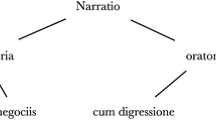Abstract
As noted so eloquently by Lynch (1990), diagrams are critically important in science. Hegarty, Carpenter, and Just (1991) classified scientific diagrams into three categories: iconic, schematic, and charts and graphs. Iconic diagrams, such as photographs and line drawings, provide a depiction of concrete objects in which the spatial relations in the diagram are isomorphic to those in the referent object. Accurate representation of spatial relations can be critical, for example to distinguish the venomous coral snake from the similarly-colored non-venomous Arizona mountain king snake. In the life sciences, iconic representations help students understand the structure of objects that are not easily open to visual inspection. For example, side-by-side drawings of the stomachs of people and cows, with the parts labeled, would provide insight into why digestion works differently in these two taxa.
Preview
Unable to display preview. Download preview PDF.
Similar content being viewed by others
References
Catley, K.M., Lehrer, R., Reiser, B.: Tracing a prospective learning progression for developing understanding of evolution. Paper Commissioned by the National Academies Committee on Test Design for K-12 Science Achievement (2005), a copy can be downloaded from, http://www7.nationalacademies.org/bota/Evolution.pdf
Catley, K.M., Novick, L.R.: Reasoning From Cladograms: A Comparison Across Levels of Biological Knowledge (manuscript) (in preparation, 2006)
Day, R.S.: Alternative representations. In: Bower, G.H. (ed.) The psychology of learning and motivation, vol. 22, pp. 261–305. Academic Press, San Diego (1988)
Dufour-Janvier, B., Bednarz, N., Belanger, M.: Pedagogical considerations concerning the problem of representation. In: Janvier, C. (ed.) Problems of representation in the teaching and learning of mathematics, pp. 109–122. Erlbaum, Hillsdale (1987)
Gattis, M., Holyoak, K.J.: Mapping conceptual to spatial relations in visual reasoning. Journal of Experimental Psychology: Learning, Memory, and Cognition 22, 231–239 (1996)
Gauvain, M., de la Ossa, J.L., Hurtado-Ortiz, M.T.: Parental guidance as children learn to use cultural tools: The case of pictorial plans. Cognitive Development 16, 551–575 (2001)
Hegarty, M., Carpenter, P.A., Just, M.A.: Diagrams in the comprehension of scientific texts. In: Barr, R., Kamil, M.L., Mosenthal, P., Pearson, P.D. (eds.) Handbook of reading research, vol. 2, pp. 641–668. Longman, NY (1991)
Hennig, W.: Phylogenetic systematics. University of Illinois Press, Urbana (1966)
Hurley, S.M., Novick, L.R.: Context and structure: The nature of students’ knowledge about three spatial diagram representations. Thinking & Reasoning (in press)
Kalyuga, S., Chandler, P., Sweller, J.: Levels of expertise and instructional design. Human Factors 40, 1–17 (1998)
Kindfield, A.C.H.: Biology diagrams: Tools to think with. The Journal of the Learning Sciences 3, 1–36 (1993/1994)
Kozma, R.B., Russell, J.: Multimedia and understanding: Expert and novice responses to different representations of chemical phenomena. Journal of Research in Science Teaching 34, 949–968 (1997)
Lynch, M.: The externalized retina: Selection and mathematization in the visual documentation of objects in the life sciences. In: Lynch, M., Woolgar, S. (eds.) Representation in scientific practice, pp. 153–186. MIT Press, Cambridge (1990)
Maienschein, J.: From presentation to representation in E. B. Wilson’s The Cell. Biology and Philosophy 6, 227–254 (1991)
Mevarech, Z.R., Stern, E.: Interaction between knowledge and contexts on understanding abstract mathematical concepts. Journal of Experimental Child Psychology 65, 68–95 (1997)
National Council of Teachers of Mathematics. Principles and standards for school mathematics. Author, Reston, VA (2000)
Novick, L.R.: Spatial diagrams: Key instruments in the toolbox for thought. In: Medin, D.L. (ed.) The psychology of learning and motivation, vol. 40, pp. 279–325. Academic Press, San Diego (2001)
Novick, L.R.: Diagram literacy in pre-service math teachers, computer science majors, and typical undergraduates: The case of matrices, networks, and hierarchies. Mathematical Thinking and Learning 6, 307–342 (2004)
Novick, L.R.: Understanding spatial diagram structure: An analysis of hierarchies, matrices, and networks. The Quarterly Journal of Experimental Psychology (in press)
Novick, L.R., Catley, K.M.: The role of perceptual and conceptual principles in students’ ability to translate between alternative hierarchical forms: Evidence from cladograms in biology (manuscript) (in preparation, 2006)
Novick, L.R., Hurley, S.M.: To matrix, network, or hierarchy: That is the question. Cognitive Psychology 42, 158–216 (2001)
Novick, L.R., Hurley, S.M., Francis, M.: Evidence for abstract, schematic knowledge of three spatial diagram representations. Memory & Cognition 27, 288–308 (1999)
Whitley, K.N., Novick, L.R., Fisher, D.: Evidence in favor of visual representation for the dataflow paradigm: An experiment testing LabVIEW’s comprehensibility. International Journal of Human-Computer Studies 64, 281–303 (2006)
Winn, W.: The design and use of instructional graphics. In: Mandl, H., Levin, J.R. (eds.) Knowledge acquisition from text and pictures, pp. 125–144. Elsevier, Amsterdam (1989)
Zacks, J., Tversky, B.: Bars and lines: A study of graphic communication. Memory & Cognition 27, 1073–1079 (1999)
Author information
Authors and Affiliations
Editor information
Editors and Affiliations
Rights and permissions
Copyright information
© 2006 Springer-Verlag Berlin Heidelberg
About this paper
Cite this paper
Novick, L.R. (2006). The Importance of Both Diagrammatic Conventions and Domain-Specific Knowledge for Diagram Literacy in Science: The Hierarchy as an Illustrative Case. In: Barker-Plummer, D., Cox, R., Swoboda, N. (eds) Diagrammatic Representation and Inference. Diagrams 2006. Lecture Notes in Computer Science(), vol 4045. Springer, Berlin, Heidelberg. https://doi.org/10.1007/11783183_1
Download citation
DOI: https://doi.org/10.1007/11783183_1
Publisher Name: Springer, Berlin, Heidelberg
Print ISBN: 978-3-540-35623-3
Online ISBN: 978-3-540-35624-0
eBook Packages: Computer ScienceComputer Science (R0)




